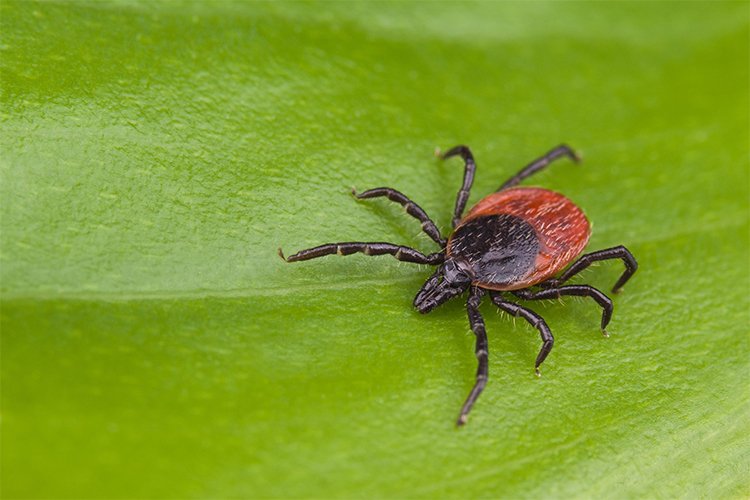- Beauty & Skincare
- Fashion
- Food And Drinks
- Health & Care
- Home & Garden
- LifestyleExplore stories and advice on living your best life. From personal growth to entertainment, dive into the latest in lifestyle trends and inspiration.
- Travel
- Beauty & Skincare
- Fashion
- Food And Drinks
- Health & Care
- Home & Garden
- LifestyleExplore stories and advice on living your best life. From personal growth to entertainment, dive into the latest in lifestyle trends and inspiration.
- Travel
Now Reading: Tick season is getting longer: Protect yourself from Lyme disease
-
01
Tick season is getting longer: Protect yourself from Lyme disease
- Beauty & Skincare//
- Fashion//
- Food And Drinks//
- Health & Care//
- Home & Garden//
- Lifestyle//Explore stories and advice on living your best life. From personal growth to entertainment, dive into the latest in lifestyle trends and inspiration.
- Travel//
- Home
- Health & Care
- Tick season is getting longer: Protect yourself from Lyme disease
Tick season is getting longer: Protect yourself from Lyme disease
SahilHealth & Care1 year ago27 Views

In parts of the U.S. and Canada, rising temperatures caused by climate change could be contributing to a rise in tick-borne diseases. Ticks are now thriving in a wider geographic range, emerging earlier and staying longer during the transitional seasons of spring and fall. That means we need to stay vigilant to protect ourselves from ticks that cause Lyme disease and other diseases—even during the winter months in many warmer states and provinces.
Here’s a timely reminder of why Lyme disease prevention is important, and a refresher on the steps you can take to avoid tick bites.
What are the symptoms of Lyme disease?
Lyme disease is best known for its classic symptom, a circular red rash that appears after the bite of an infected tick (scroll down to see photos of classic and non-classic rashes). However, 20 to 30% of people do not develop a rash. And a rash can be easily missed because ticks tend to bite in dark folds of the body, such as the groin, armpits, behind the ears, or on the scalp. Some people experience flu-like symptoms such as headache, fever, chills, fatigue, and joint pain, so if you notice a rash or have these symptoms, contact your doctor. At this stage, prompt antibiotic treatment can wipe out the bacterial infection.

If people do not receive treatment because they did not notice the rash or other early symptoms did not appear, the bacteria can spread to other parts of the body. Not only can the bacteria themselves cause problems, but the body’s immune system can overreact. Any of these processes, or sometimes both, can damage joints, the heart, and/or the nervous system. And some people treated for any stage of Lyme disease develop post-Lyme disease syndrome, which can cause a range of debilitating symptoms, including fatigue, difficulty concentrating, and depression.
How to Avoid Lyme Disease
The best way to avoid Lyme disease and other tick-borne illnesses is to avoid tick bites. Blacklegged ticks (also called deer ticks) can be infected with the bacteria that cause Lyme disease. If you live in an area where Lyme disease is common, these steps may help.
Know where ticks are likely to hide. Ticks usually crawl up your legs from leaves or blades of grass on the ground, so be especially careful when walking through fields or meadows and on hikes where you might brush against bushes, leaves, or trees. Try to walk on well-cleared trails.
Wear protective clothing. Long pants tucked into socks are the best way to prevent ticks from crawling under your pant leg. Lighter-colored clothing can make ticks easier to spot.
Use repellents. You can buy clothing pre-treated with the insecticide permethrin (which repels ticks). Or you can spray your own clothes and shoes; just follow the directions carefully. Use a product containing DEET, picaridin, oil of lemon eucalyptus (OLE), IR3535, paramenthanediol (PMD), or 2-undecanone on any exposed skin. This EPA lookup tool can help you find a product that best fits your needs. Look for the concentration of the active ingredients: for example, at least 20% but no more than 50% for DEET; between 5% and 20% for picaridin; and 10% to 30% for oil of lemon eucalyptus. Many products come in pump spray bottles or as pens or wipes, which can make it easier to apply when needed.
Get checked for ticks. If you have been in tick-infested areas, ask a partner to check you for ticks in areas of your body that you can’t see well. The most common bite sites are the backs of the knees, groin, under the arms, under the breasts for women, behind the ears, and on the neck. The species of tick that transmits Lyme disease is about the size of a sesame seed. Keep in mind that a tick must be attached to your skin for 24 to 36 hours to transmit enough bacteria to infect you with the disease.
For more information on preventing Lyme disease or living with it, visit Harvard Health Publishing’s Lyme Wellness Initiative.

























